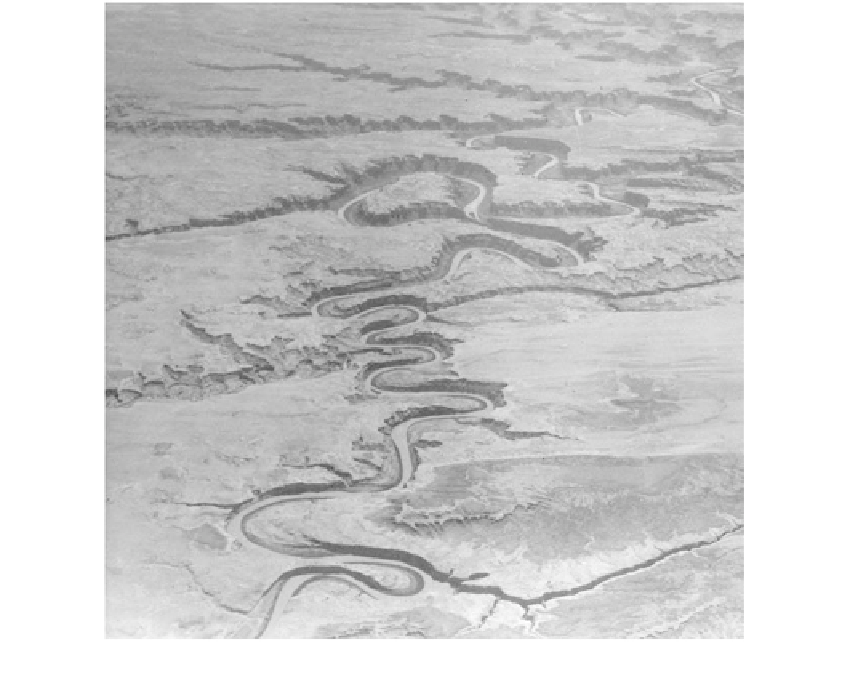Environmental Engineering Reference
In-Depth Information
Estuarine Zone
See
Section 7.4.2.
Rejuvenation
Regional uplift causes the base level of the stream to rise (with reference to sea level) and
the river again begins to incise its channel and dissect the surrounding floodplain.
Entrenched meanders can develop deep canyons (Figure 7.18), such as the Grand Canyon
of the Colorado River, and relatively steep gradients out of harmony with the normal
meander gradients of the later stages of erosion.
Water gaps cut through resistant strata also result from rejuvenation. Examples are the
Susquehanna River where it has eroded the folded Appalachian Mountains at Harrisburg,
Pennsylvania (see
Figure 6.38),
and the Delaware Water Gap between New Jersey and
Pennsylvania (see
Figure 2.5).
Terrace deposits also result from changing base levels. Uplift, or lowering of sea level,
can cause a river to incise a new channel in an old floodplain. The limits of the previous
channels remain at higher elevations as terraces, as shown in
Figure 7.19.
Buried Channels
In broad bedrock valleys, the river may cut a deep gorge at a particular location in the val-
ley. Subsequent deposition during periods of base level lowering may fill the gorge with
FIGURE 7.18
Meandering of the Colorado River in rejuvenated plateau of sedimentary rocks.


